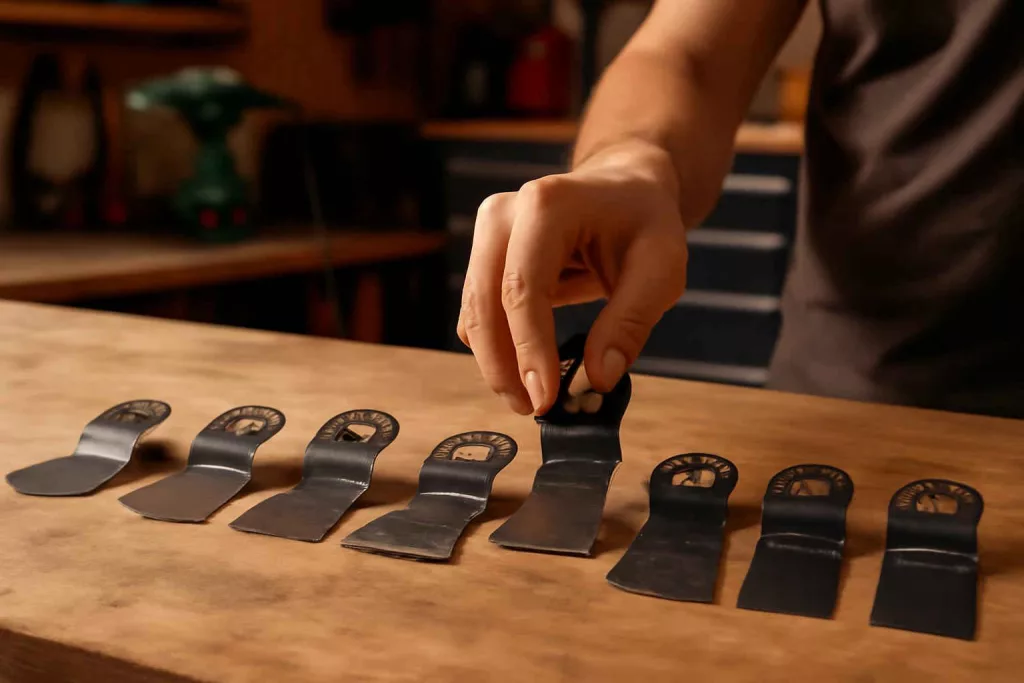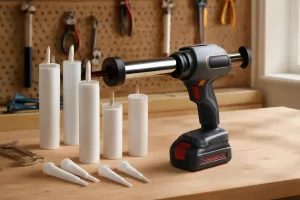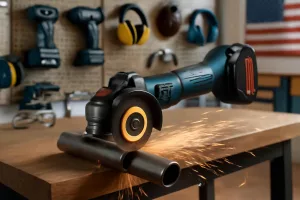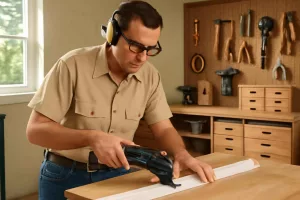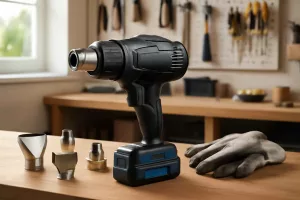When tackling drywall removal, metal pipe trimming, or detailed plunge cuts in wood, choosing the right oscillating multi-tool blades can make or break your home renovation project. With the vast array of options available—from bi-metal blades ideal for metal cutting to diamond-grit variants designed for grout and tile—it’s essential to understand which blades deliver the cleanest cuts, longest life, and broadest compatibility. Whether you’re a DIY enthusiast upgrading your toolkit or a homeowner looking for reliable cutting accessories, this guide to the best oscillating multi tool blades will arm you with the knowledge to select the perfect blade for every task. Start exploring options on Amazon to find your next set of blades: oscillating tool blades on Amazon.
By focusing on blade material, tooth configuration, and compatibility, you can save time on your next bathroom remodel, kitchen cabinet overhaul, or general carpentry work. Proper blade selection not only improves cut quality but also reduces the risk of tool kickback and blade wear. Throughout this article, you’ll learn how to identify the key features of high-performance oscillating blades, compare top-rated products for wood, metal, and tile cutting, and discover maintenance tips to extend blade life. Plus, find links to useful accessories such as dust extractors for power tools and Shop-Vac attachment kits to keep your workspace clean and safe.
Understanding Oscillating Multi-Tool Blades
Oscillating multi-tools operate at high frequencies, vibrating the blade side-to-side to slice through materials with precision. Blades for these tools differ widely based on material construction, tooth geometry, and mounting interface. Familiarizing yourself with these factors ensures you choose blades that cut efficiently and last through rigorous projects.
Blade Materials and Coatings
The majority of oscillating blades are made from bi-metal, carbide, or diamond-coated steel. Bi-metal blades combine high-speed steel teeth with a flexible alloy backing, offering a balance of durability and flexibility—ideal for wood and metal. Carbide blades, featuring tungsten carbide tips, excel in cutting through tough materials like cement board and nails, but come at a higher price point. Diamond-coated blades deliver the hardest cutting surface, making them the go-to choice for grout, tile, and masonry. When deciding, consider the material you’ll cut most often and how frequently you’re willing to replace worn blades.
Blade Tooth Count and Cutting Speed
Tooth count affects both cut quality and speed. Lower tooth counts (5–10 teeth per inch) remove material quickly but produce rougher edges, beneficial for aggressive material removal. Higher tooth counts (15–32 TPI) yield smoother cuts but slow down progress. For wood plunge cuts, a mid-range 12–16 TPI blade often strikes the best compromise, while metal cutting may require 24–32 TPI for clean finishes. Always match tooth count to the task: rough framing cuts favor speed, finish work demands precision.
Universal vs Brand-Specific Fit
Oscillating blades attach via either universal interfaces—featuring open or closed mounting holes—or proprietary systems like Starlock or OIS. Universal blades guarantee compatibility with most tools using adapter rings, offering budget flexibility. Proprietary systems, such as Fein’s Starlock, lock blades more securely, reducing vibration and enhancing cutting control. If you own a compatible tool, upgrading to a proprietary blade system may be worthwhile, but universal blades remain a versatile choice for mixed-brand toolkits.
Key Factors When Choosing Oscillating Tool Blades
Selecting the ideal oscillating blade goes beyond price. To achieve the best performance, evaluate the following factors against your specific project needs.
Cutting Applications: Wood, Metal, Tile, Drywall
Identify the primary materials you will cut. Multi-purpose bi-metal blades handle wood, plastic, and metal nails, making them a solid all-round choice. For drywall work, choose a carbide grit blade that resists gumming and can slice through screws. Tile and grout removal demand diamond-coated blades to withstand abrasive wear. Having a dedicated blade for each material ensures cleaner cuts and longer blade life.
Blade Length and Thickness
Blade length determines cutting depth; shorter blades (1″–2″) suit narrow or delicate cuts, while longer blades (3″–4″) excel at deeper plunge cuts in thick stock. Blade thickness influences stiffness: thicker blades reduce bending during forceful cuts but may sacrifice precision. For versatile home renovation work, a 2″ bi-metal blade with moderate thickness typically covers most needs.
Compatibility and Adapter Systems
Check your multi-tool’s mounting interface before purchasing. Universal blades usually fit tools from Bosch, DeWalt, Makita, and Ryobi with an included adapter. Proprietary blades, however, only fit specific brands; for example, Starlock blades only work with Starlock-compatible tools. Review your tool manual or inspect the tool’s oscillating head to confirm whether you need a universal blade or a proprietary model.
Top Oscillating Multi-Tool Blades for Home Renovation
Based on compatibility, cutting performance, and durability, the following blades stand out for a range of home renovation tasks. Each recommendation includes an Amazon shopping link for convenience.
Premium Pick: Fein Starlock Bi-Metal Blade
The Fein Starlock bi-metal blade sets the standard for bi-metal oscillating blades. With a reinforced Starlock mount, it minimizes wobble at high speeds. The high-speed steel teeth cut through nails, screws, wood, and plastic with ease, making it ideal for framing, demolition, and finish work. If you own a Starlock or StarlockPlus tool, this blade’s precision and longevity justify its premium price.
Buy the Fein Starlock bi-metal blade on Amazon
Best Budget Universal Blade: Bosch Multi-Material Pack
Bosch’s budget-friendly multi-material blade pack includes bi-metal blades designed to cut wood, metal, plastic, drywall, and fiberglass. With universal fit, these blades work on most oscillating tools without adapters. The pack typically offers several blade shapes—semi-circle, straight, and plunge-cut—covering everyday home renovation needs at an affordable price point.
Shop Bosch multi-material blades on Amazon
Best for Metal Cutting: DeWalt Bi-Metal Metal Blade
DeWalt’s bi-metal metal cutting blade features small toothper-inch count and a robust alloy backing, designed to slice through metal studs, conduit, and nails. The hardened teeth remain sharp longer than standard HSS blades, making it a go-to for electrical and plumbing renovations where metal cutting is frequent.
Purchase DeWalt metal cutting blade on Amazon
Best for Wood Plunge Cuts: Makita Wood Plunge Blade
Makita’s plunge-cut wood blade features a high tooth count for smooth edges and a tapered design to minimize binding. The blade’s geometry allows for aggressive plunge cuts in hardwood, plywood, and composite decking materials. Its universal mount works seamlessly with most brands, making it a valuable addition for carpentry and cabinetry work.
Get the Makita wood plunge blade on Amazon
How to Maintain and Extend Blade Life
Proper care of your oscillating blades not only preserves cutting performance but also reduces replacement costs. Follow these maintenance tips to get the most out of each blade.
Cleaning and Storage
After use—especially when cutting adhesive, drywall, or resin—scrub blade teeth with a wire brush or solvent to remove residue. Store blades in a dry environment, ideally in a blade organizer or case, to prevent corrosion and damage to teeth.
Proper Usage Techniques
Avoid side pressure on the blade; let the tool’s oscillation do the work. Cutting at the wrong angle or forcing the blade through material increases heat and wear, shortening blade life. Use a steady, controlled feed rate and adjust the tool’s speed setting based on blade type and material hardness.
When to Replace Blades
Signs that a blade needs replacement include increased cutting time, visible rounding of teeth, excessive vibration, or chipping along the blade edge. Replace blades at the first sign of performance drop to maintain safety and finish quality.
Tips for Using Oscillating Blades Safely and Efficiently
Oscillating tools are versatile and safe when used properly. Follow these guidelines to maximize efficiency and minimize risk.
Safety Gear
Always wear safety goggles and hearing protection. Use gloves to shield hands from sharp blades, and consider a dust mask when cutting drywall or treated wood. Secure small workpieces in a vise or clamp to prevent shifting.
Cutting Techniques
Initiate cuts at low speed to establish a groove before increasing speed for more aggressive removal. For plunge cuts, tilt the tool forward slightly and apply even pressure. Allow the blade to cool between prolonged cuts to prevent overheating.
Avoiding Common Mistakes
Never force the blade beyond its cutting capacity; use the correct blade for the material. Check mounting screws or adapter tightness before each use to prevent wobbling. Keep hands clear of the blade path and always unplug or remove the battery before changing blades.
Frequently Asked Questions
Do oscillating tool blades work on all brands?
Universal blades fit most brands with adapter rings, but proprietary systems like Starlock require compatible tools. Always confirm your tool’s mounting interface before purchase.
How long do blades last?
Blade life depends on material hardness and cutting frequency. Standard bi-metal blades may last through several hours of moderate cutting, while carbide and diamond blades can endure more abrasive applications. Proper maintenance extends service life.
Can I sharpen my blades?
Some bi-metal blades can be resharpened using a fine metal file, but carbide and diamond coatings are generally not resharpenable. Replacement is recommended once performance declines.
Choosing the right best oscillating multi tool blades for your renovation needs ensures cleaner cuts, faster completion times, and safer operation. Equipped with this guide, you can confidently select universal or proprietary blades for wood, metal, or tile work. Ready to upgrade your blade collection? Explore the latest options on Amazon now: shop oscillating multi tool blades. And remember to pair your blades with a quality dust extractor to keep your workspace clean and efficient.
